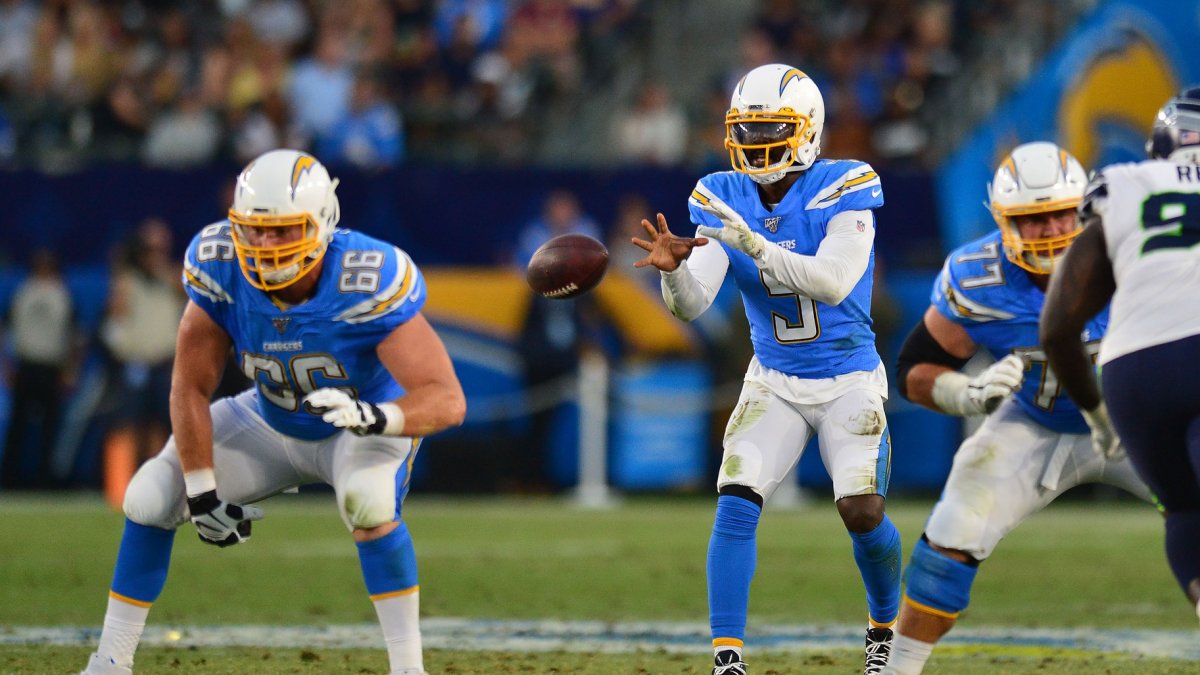Tyrod Taylor is little more than a placeholder for the Justin Herbert era to begin for the Los Angeles Chargers in the upcoming 2020 NFL season, but maybe he could be more than that.
The NFL is a league of recency bias, and the last thing we saw from Taylor, outside of some mop-up duty last year, was his disastrous stint as a starter with the Cleveland Browns. Taylor was coming off three solid years starting for the Buffalo Bills, and it seemed like he might steer the ship for a while as Baker Mayfield adjusted to the NFL. But Taylor was so catastrophic that he lasted until half time of the third game before being replaced. He ended that season with a 47.0 overall PFF grade. He was terrible, and there’s really no denying that.
The stretch was so out of character from his previous performances that if we don’t need to discount it completely, we need to at least place it in the proper context of the rest of his career.
PFF grades have always been a little kinder to Taylor than the general perception of his play, and rather than dismiss that as an example of how PFF grades are wrong because they don’t mesh with the eye test, we should explore why that rift exists at all.
One of the key selling points of PFF grades is that they factor in every play of every game. We, as football fans, like to distill performance into key statistics — touchdowns scored, interceptions thrown, sacks recorded, etc. — but that is shrinking a player’s overall production into a tiny subset of plays and expecting it to provide an accurate reflection of overall performance. That just isn’t realistic.
Over his three seasons starting, Taylor played 2,674 snaps, not including another 149 that were nullified due to a penalty of some kind. Combining his touchdowns and interceptions and judging him by that ratio is analyzing him based on 2.5% of his total playing time. If you were to make a judgment on a movie based on a little over two minutes of it, it seems fair to say there are things you may have missed along the way.
PFF’s grades factor in the missing pieces and give a complete picture of play. Taylor’s grade factors in every missed throw, every dropped pass, every dime deep downfield and every fumble from poor pocket management. You can disagree with the grades of individual plays, but the totality of the evidence is a powerful tool. Over the three-season stretch when Taylor started for the Bills, his PFF grade was 83.2 — more than 10 grading points fewer than Tom Brady’s league-leading mark, but still a pretty impressive number. Taylor's grade as a passer over his time starting ranked 12th, 15th and then 10th in those three seasons. His rushing threat only added to his grade, building a picture of a player who was somewhere in the 10th-15th range of quarterbacks league-wide.
[Editor’s Note: PFF’s advanced statistics and player grades are powered by AWS machine learning capabilities.]
Tyrod Taylor: PFF Grades with Bills from 2015-17
| Year | PFF Overall Grade | PFF Passing Grade | PFF Rushing Grade |
| 2015 | 77.0 (9th) | 73.8 (12th) | 74.7 (7th) |
| 2016 | 75.6 (15th) | 74.8 (15th) | 68.3 (5th) |
| 2017 | 80.0 (9th) | 74.5 (10th) | 72.6 (9th) |
*Not including playoffs; Ranks among qualifying quarterbacks
Exclusive content for premium subscribers

WANT TO KEEP READING?
Dominate Fantasy Football & Betting with AI-Powered Data & Tools Trusted By All 32 Teams
Already have a subscription? Log in



 © 2025 PFF - all rights reserved.
© 2025 PFF - all rights reserved.